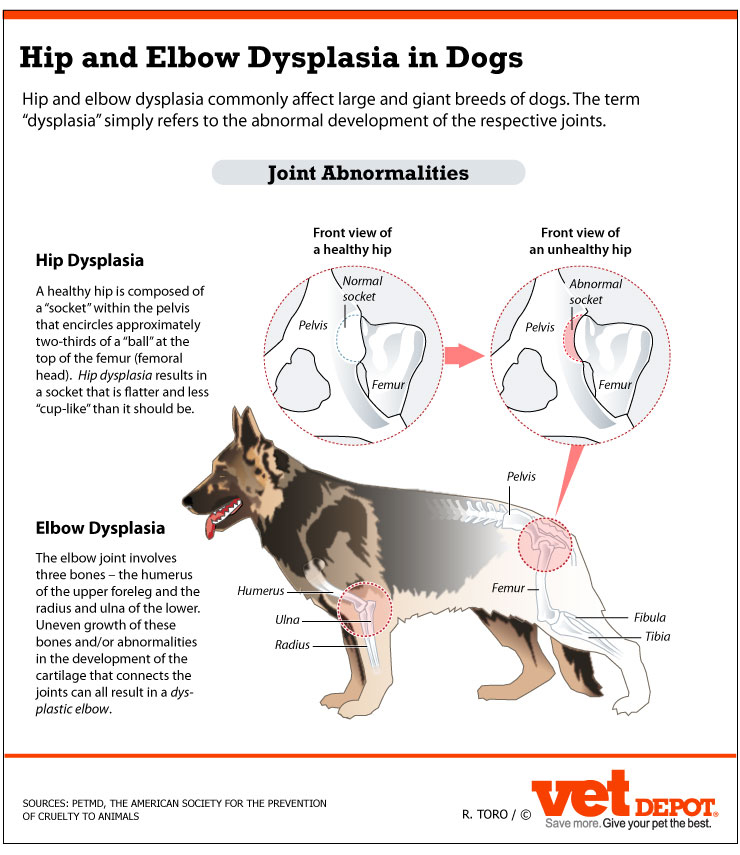
Labrador Hip Dysplasia Your dogs breed is a risk factor for hip dysplasia. Hip dysplasia is caused by hereditary and genetic conditions particularly among larger dog breeds like Saint Bernard Labrador Retriever German Shepherd the Great Dane etc.

Elbow and Hip Dysplasia testing can be done on your English Labrador to see if they have the potential for developing either condition.
Can labs have hip dysplasia. Other common Lab joint problems include osteoarthritis from old age and not necessarily hip dysplasia and elbow dysplasia which can result in lameness of the front legs. Always consult your veterinarian if you see the symptoms of Labrador hip dysplasia. X-rays and a full exam are necessary for proper diagnosis.
Labrador Hip Dysplasia Surgery. While not everything is known about the role that nutrition plays in your puppys risks for hip dysplasia one of the best ways to protect your lab puppy is to feed them a veterinary-recommended puppy food specific to large-breed puppies. The condition Labrador Hip dysplasia is a generic disease and one that frightens most Lab owners to death.
In its most severe form it can cause crippling lameness. According to the American Kennel Club all Labrador retrievers are inherently plagued by hip dysplasia due to genetics which causes issues for many owners as labs are the most popular dog breed in America. Lets have an honest discussion about Hip Dysplasia in Labradors 67 of Labradors tested by the OFA are GOOD FAIR or BORDERLINE after more than 60 years 30 generations of selectively breeding OFA certified dogs.
If you have purchased or are looking for a Labrador puppy you will probably have heard of hip dysplasia. This is a health condition that affects many different breeds of dog and is particularly serious in larger heavier breeds like Labradors. Today we are going to be looking at how you can protect your Labrador puppy from hip dysplasia.
Labrador Hip Dysplasia Your dogs breed is a risk factor for hip dysplasia. The condition is most often seen in pedigree dog breeds who are medium to large in size and have a period of rapid growth. It is a serious issue for some Labrador lines and something which you need to be aware of before you bring home a new puppy.
Hip dysplasia is seen more frequently in large breed dogs such as German Shepherds Golden Retrievers Labrador Retrievers St. Although seen in smaller dogs the prevalence is lower and the symptoms related to hip dysplasia are often less severe. The most common cause of hip dysplasia in dogs is solely based on genetics.
Large breed dogs such as the Great Dane Labrador Retriever Golden Retrievers St. Bernard and German Shepherd dogs are among those canines who have the genetic predisposition for. Canine hip dysplasia is one of the most common orthopedic problems in dogs.
Its when your dog has a malformed ball and socket joint. This means the bones dont fit properly. The joint grinds rather than slides smoothly when the dog moves.
Labrador Retriever Another large dog breed labs also have a high risk of developing hip dysplasia. Left untreated this can lead to muscle atrophy. Labs are active working dogs so signs of pain and behavioral changes should be fairly easy to spot.
Hip dysplasia is hereditary and is especially common in larger dogs like the Great Dane Saint Bernard Labrador Retriever and German Shepherd Dog. Hip dysplasia doesnt have to shorten a dogs life as long as the pain is managed and the condition can take years to reach a point where there is poor quality of life and suffering. Many dogs can life long and happy lives despite hip dysplasia but they will need the support and care of their owners to manage the pain and discomfort.
Causes of Hip Dysplasia in Dogs. Hip dysplasia is caused by hereditary and genetic conditions particularly among larger dog breeds like Saint Bernard Labrador Retriever German Shepherd the Great Dane etc. Factors like types of exercise inconsistent training added weight excessive growth rate inadequate nutrients and minerals have been.
Contents Abnormally developed hip Start showing clinical signs Black lab breeders Retriever breeder ontario Brindle staffordshire bull terrier oct White And Brindle Staffordshire Bull Terrier Oct 21 2020. Base colours can be red fawn white black or blue or any one of the aforementioned with white any shade of brindle or any shade of. While Labradors are one of the healthiest breeds they can be prone to certain conditions.
In particular elbow and hip dysplasia. Which unfortunately are very common in Labrador Retrievers. This joint problem causes pain that begins in puppyhood and can continue as your dog ages.
Most people who have hip dysplasia were born with the condition. Hip dysplasia can develop if the babys position in the womb puts pressure on the hips. It can also be genetic passed down in families.
When people are born with this condition it is called developmental dysplasia of the hip or congenital hip. Elbow and Hip Dysplasia testing can be done on your English Labrador to see if they have the potential for developing either condition. The Orthopedic Foundation for Animals OFA along with your veterinarian can use radiographs of the hips to help determine if.
German Shepherds Golden Retrievers and Labrador Retrievers are the most commonly affected breeds but any large and giant breed dogs are at risk for canine hip dysplasia. If you have a large or giant-breed dog set up monthly checkups between 8 weeks and 10 months of age to help determine if surgical options are needed.